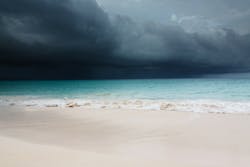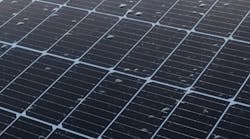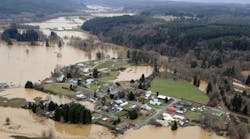Tropical Storm Karen Weakens while Hurricane Lorenzo Strengthens
As the peak month for hurricane season comes to a close, a few storms are still stirring.
Over the weekend, forecasters expect Tropical Storm Karen to dissipate, but Hurricane Lorenzo has turned into a Category 4 hurricane.
Lorenzo is situated in the open Atlantic Ocean where it emerged on Sept. 23 as a tropical depression. According to the Washington Post, it was a tropical storm by lunchtime, and then grew into a hurricane on Wednesday, Sept. 25 with 80 mph winds. A day later, Lorenzo intensified into a category 4 hurricane with 130 mph winds, making it the third major Atlantic hurricane this season, the Washington Post reported.
According to USA Today, AccuWeather said winds will most likely send Lorenzo northwest into Sunday “then north to northeast into early next week.” Forecasters have warned the Azores, the Lesser Antilles and the Bahamas to monitor the hurricane. Lorenzo is not predicted to impact the U.S. or the Caribbean.
While Lorenzo expanded, Karen hit Puerto Rico as a Tropical Storm on Tuesday, Sept. 24 leaving up to half a foot of rain in some areas. Radar-estimated totals topped a foot just offshore, according to the Washington Post. Officials in Puerto Rico and the U.S. Virgin Islands reported “a downed bridge, limited power outages, flooding and landslides,” according to The Washington Post.
Additionally, crews temporarily closed “some coastal roads in southeastern Puerto Rico that flooded after Karen hit the island on Tuesday and knocked out power to 29,000 customers,” the Washington Post reported.
Before Karen made her way to Puerto Rico on Tuesday, a magnitude 6.0 earthquake hit 49 miles off the island’s northwest coast, according to CBS News. Puerto Rico is also still recovering from Hurricane Maria, which hit in 2017.
Read more about hurricanes, tropical storms and flooding.
About the Author
Katie Johns
Editor-in-Chief
Katie Johns, editor-in-chief of Stormwater Solutions, graduated from the University of Missouri in 2016 with a Bachelor of Journalism and a Bachelor of Arts in Spanish. Johns joined the Stormwater Solutions team in September 2019. Johns also helps plan the annual StormCon conference and co-hosts the Talking Under Water podcast. Prior to entering the B2B industry, she worked as a newspaper reporter and editor in Sarasota, Florida, and a magazine assistant editor in the Chicago suburbs. She can be reached at [email protected].



